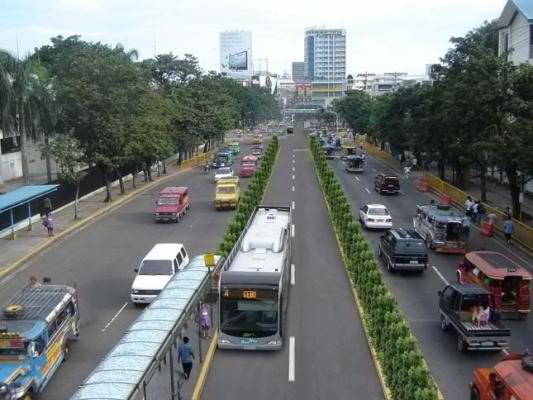Rama wants a hand in BRT management
Cebu City Mayor Michael Rama wants the Cebu City government to be actively involved in the operations of the Bus Rapid Transit (BRT) in the city.
Rama flew to Manila to meet with representatives from World Bank and the Department of Transportation and Communications (DOTC) for a briefing on the status of the proposed BRT system.
While Rama thanked DOTC officials for lobbying before the National Economic Development Authority (NEDA) board for the passage of the BRT system project, he also told them on the need to involve city officials in its operations.
“”I told them that the BRT should be operated locally, but there will be DOTC and a steering committee that will be established nationally,” he said.
Rama said that while the national government will be the signatory of the loan that will fund the BRT project, national officials will have to “bring a level of trust, capacity building at the local level.”
About $228.5 million is needed to fund the BRT project that will ply a 30-kilometer route from N. Bacalso Avenue in barangay Bulacao to Osmeña Boulevard, Escario Street, Archbishop Reyes Avenue, Gov. Cuenco Avenue to barangay Talamban in the north.
But the Movement for Livable Cebu suggested to include in the route the roads in Bulacao, Pardo (until the National Highway), P. Del Rosario, and MJ Cuenco up to North.
“As we see, there is only a less of population density, especially in Jones Avenue and Escario, while in Talamban, we also found out that BRTs have to pass through chains of flyovers,”
Rudy Alix, one of the convenors of The Movement for a Livable Cebu said.
Their counter proposal was created after the proposal of the BRT was made. Alix said they also want to discuss their counter proposal to the winning bidder.
“If these would be approved, then you would be serving the ‘masa’ and not just the middle class. The BRT will be very visible and as well as sustainable,” Alix added.
During Rama’s conversation with DOTC and World Bank officials, Rama mentioned of the old Cebu train system.
However, he said, it was not the proper time yet to discuss with them his vision of reviving the operation of the Cebu train system as a means of mass transportation from Argao town in the south to Danao City in the north.
“Wala pa ta mag hisgot kay basin ma tuk-an unya sila. Ato lang anam-anamon,” he said. (I have not mentioned to them the plan to revive the train system as it might surprise them.)
But Rama said he intends to pursue an earlier plan to identify the old Cebu train system route and what structures are now built on it.
Rama said he already asked Citom to work on the matter in coordination with a multi-sectoral group that he wanted to tap for the work.
He also welcomes the proposed project of South District Rep. Rodrigo Abellanosa to have an underpass in the intersection of N. Bacalso Ave. and F. Llamas St.
“If it has been proven in Malaysia, then we can go into it. Why engineer a new one when there is a proven one,” Rama said.
He also instructed City Planning and Development Office (CPDO) head Engr. Kenneth Carmelita Enriquez to join in the discussion of the underpass project.
He wants to look into the technicality and feasibility of the project and whether or not it can affect the implementation of the BRT project.
Under Abellanosa’s project, the existing four-lane N. Bacalso Ave will have to be widened to six lanes with the two center lanes being the underpass.
The underpass will have cisterns which can accommodate storm water as much as ten times the size of an Olympic-size swimming pool or five hours of continuous rains.
Rama said that the underpass and cisterns will not affect the city’s drainage masterplan and it can be integrated.
As to the problem of acquiring road right of way along N. Bacalso Ave. which is a commercial area, Rama said it can be addressed as long as the local government unit plays an active role.
“If it is really needed, you will have to force it. We (LGU) should be involved in the convincing of the clearing of the roads,” he added.
Related Stories:
It’s a go for BRT: P10.6-billion mass transit project completed by 2017
NEDA approves BRT project for Cebu City
Disclaimer: The comments uploaded on this site do not necessarily represent or reflect the views of management and owner of Cebudailynews. We reserve the right to exclude comments that we deem to be inconsistent with our editorial standards.

